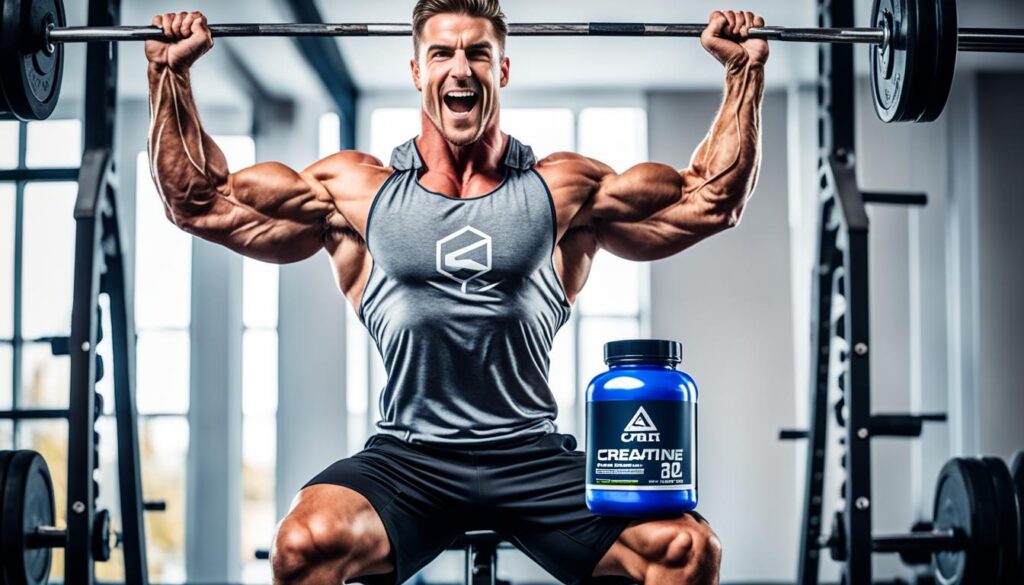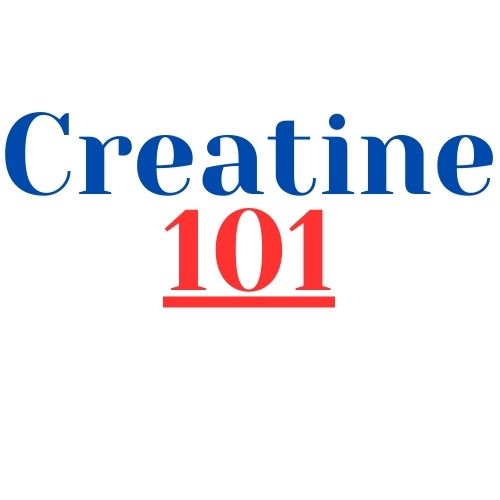The realm of high-intensity training often delivers unexpected revelations, but this one might take the crown: A study involving 43 recreationally active, college-aged men found that creatine supplementation could significantly bolster endurance performance improvements brought on by high-intensity workouts. Given its reputation for muscle bulking, one might find it surprising that creatine can also effectively enhance aspects of cardiorespiratory fitness and strength training.
My interest in the impacts of creatine use in high-intensity training began to deepen after encountering these findings. Not only were usual suspects like VO2PEAK increased, but more nuanced measures such as the ventilatory threshold—a key indicator of endurance performance—were also significantly improved within the creatine group. This juxtaposition of creatine for athletic performance and how it interfaces with explosive exercises set the scene for a deep dive into the substance’s versatile roles.
Creatine supplementation, synonymous with power and bulk, is now stepping into the limelight for its role in optimizing high-intensity workouts with a finer touch—sharpening the edge of endurance athletes looking to push past their currents limits. Let’s dive into what makes creatine a cornerstone in an athlete’s regimen and how it might just be the unsung hero of endurance performance enhancement.
Key Takeaways
- Creatine supplementation can enhance cardiorespiratory fitness markers in high-intensity training programs.
- Contrary to popular belief, creatine is not solely for muscle bulk but also improves submaximal endurance performance.
- A daily dose of 10 grams of creatine is considered safe and beneficial for supporting high-intensity workouts.
- Creatine for athletic performance extends into both maximal and submaximal exercise intensities.
- Integrating creatine use into explosive exercises and strength training may provide a competitive edge.
The Fundamentals of Creatine and Its Role in Muscle Energy
As we dive into the intricate world of sports nutrition and performance enhancement, creatine for strength and power stands prominently at the forefront of our discussion. This remarkable substance isn’t just another supplement; it is a pivotal player in the dynamic arena of muscle energy and high-intensity training. To fully comprehend its impact, we must first address what creatine is and how it catalyzes key physiological adaptations essential for demanding workouts.
Understanding Creatine: A Basic Overview
At its core, creatine is a compound synthesized from three amino acids and is predominantly found within our skeletal muscles. Its role is simple yet crucial—it facilitates the rapid production of energy, specifically adenosine triphosphate (ATP), the energy currency of our cells. When I reflect on the countless clients I’ve guided through high-intensity regimens, it becomes evident that maintaining optimal creatine levels can significantly bolster their performance. Consistent creatine supplementation helps amplify work capacity, a fundamental aspect crucial for anyone engaging in vigorous activities and seeking muscle growth and strength enhancement.
The Biological Mechanics of Creatine in High-Intensity Exercise
Let’s delve into the biological significance of creatine during exhaustive and explosive training sessions. Phosphocreatine (PCr), a form of stored energy in the muscles, is instantly mobilized to replenish ATP levels, enabling a rapid response during high-intensity efforts. My experience with athletes demonstrates that incorporating a tailored creatine dosage for high-intensity exercise can raise muscle PCr reserves by a substantial margin—up to a 20% increase with a daily intake of 20 grams over just five days. This elevation in PCr doesn’t just improve immediate energy availability; it also reinforces the muscle’s buffering capacity, tempers glycolysis rates, and accelerates PCr’s resynthesis between high-powered bouts of exercise. Consequently, trainers and athletes often observe a noticeable uptick in training adaptability and overall athletic prowess.
In conclusion, integrating creatine into a training regimen is a decision informed by understanding its fundamental role in muscle energetics and the fine-tuning of creatine effects on high-intensity training. Done right, this not only results in tangible gains in muscle energy but also primes the body for continual physiological evolution.
Optimizing Performance: Creatine Use in High-Intensity Training

As an ardent advocate for maximizing workout efficiency, I’ve observed firsthand the transformative impact of creatine supplementation in high-intensity workouts. The robust synergy between creatine benefits and its utilization in high-intensity training programs is not just a matter of conjecture but one backed by compelling evidence.
Picture this: You’re midway through a grueling session; the intensity is pushing your limits. Here’s where creatine comes into play. It’s not just about bulking up, although the augmentation of muscle mass is certainly a notable advantage. It’s about the substantial athletic performance enhancement creatine delivers during those critical moments of lifting, sprinting, or any activity demanding a rapid burst of energy.
- Creatine improves power output and muscle strength, essential variables that define an athlete’s capacity to outperform.
- It acts as a crucial cog in the energy production machine during high-intensity, explosive training maneuvers.
- The compound expedites the replenishment of phosphocreatine stores, enabling sustained high-level performance.
Let’s delve into the nitty-gritty with a table that succinctly captures why creatine is the go-to supplement for those looking to excel in their high-intensity endeavors:
| Benefit | Impact on High-Intensity Training | Takeaway for Athletes |
|---|---|---|
| Enhanced Muscle Mass | Increased muscular endurance and strength for prolonged training sessions. | Train harder and longer with visible results in muscle development. |
| Boosted Power Output | Improvement in explosive movements, such as sprinting and heavy lifting. | Attain peak performance during crucial phases of competition or training. |
| Rapid PCr Replenishment | Quicker recovery of energy stores between high-intensity intervals. | Maintain consistency in effort and output throughout the workout. |
Imagine this scenario: An athlete, primed with creatine, steps onto the track or field. They’re not just ready; they’re powered by a scientifically proven ally, one that ensures their body can meet the relentless demands with vigor and vitality. That is the essence of workout efficiency, and it’s what creatine promises—a tangible enhancement to the training experience.
In conclusion, while my training philosophy emphasizes a holistic approach, I recognize the unparalleled value of creatine in sculpting a regimen that substantially boosts high-intensity performance. It’s about leveraging every available tool to break plateaus, outperform expectations, and achieve athletic excellence—creatine is undoubtedly one of those pivotal tools.
Clinical Insights: How Creatine Amplifies High-Intensity Workouts
The quest for optimal performance in high-intensity training often leads athletes and fitness enthusiasts to a mighty ally: creatine. A growing body of creatine research robustly delineates its role in enhancing athletic prowess, especially when it comes to high-intensity interval training (HIIT) regimens. As someone deeply invested in fitness, I’ve seen firsthand the remarkable endurance enhancements with creatine supplementation—its ability to elevate workouts from ordinary to extraordinary can’t be overstated.
Research Evidence on Creatine for Athletic Performance Enhancement
Extensive investigations into evidence-based creatine usage have shown a consistent trend: creatine is more than just a supplement; it’s a performance-enhancing staple. When we consider the scientifically proven creatine for high-intensity training benefits, we’re looking at enhanced phosphocreatine stores that fuel muscles during intense anaerobic activity, enabling athletes to sustain higher work rates and recover quicker between explosive bursts of exercise.
Creatine Supplementation and Its Effects on High-Intensity Interval Training (HIIT)
Understanding how creatine supplementation directly impacts HIIT performance is crucial. An exemplary case study highlighted a group of athletes who incorporated creatine into their HIIT protocol. The results were striking: a notable 16% improvement in their ventilatory threshold (VT), indicative of superior endurance. This contrasted starkly with a placebo group that only experienced a 10% increment. Such compelling findings underscore creatine’s significant contribution to pushing the boundaries of athletic capacity.
It’s clear why creatine continues to hold the fort as a top-tier supplement—it revolutionizes the conventional approach to high-intensity workouts.
Powering Through: Creatine for Strength and Power Workouts

When we talk about elevating our performance in strength and power exercises, one supplement consistently enters the conversation: creatine. Documented extensively in scientific literature, creatine’s acclaim in boosting strength training enhancement is well-founded. The substance is particularly known for its capacity to bolster creatine for strength and power activities.
During my own rigorous workouts, I’ve noticed a considerable impact on my performance when incorporating creatine and muscle mass strategies. The addition of creatine has proved pivotal to my routine, especially when engaging in explosive exercises with creatine. It’s not merely anecdotal; the scientific consensus aligns with my experience, showing notable improvements in muscular hypertrophy and torque production with regular creatine intake.
The tactical employment of creatine benefits anyone striving for muscle gains and explosive power. By scaling up intramuscular phosphocreatine levels, I’ve been able to push my limits and triumph over previous strength plateaus. Enhanced recovery periods and an empowered ability to tackle heavy-duty lifting sessions are just a few of the compounded perquisites that creatine so generously provides.
| Benefits of Creatine | Influence on Workouts |
|---|---|
| Increased muscular phosphocreatine | Heightened capability for high-intensity work |
| Enhanced torque production | More effective lifting sessions |
| Improved recovery between sets | Sustained performance over repeated exercises |
| Support for muscular hypertrophy | Achievement of substantive gains in muscle strength |
The table above provides a snapshot of how creatine integrates into a fitness enthusiast’s journey, offering both immediate and sustained advantages. Whether I’m preparing for explosive sprints or aiming to conquer new personal bests in resistance training, creatine proves to be an indispensable ally.
I recommend that any athlete looking to optimize their training regimen consider the evidence that supports integrating creatine into their dietary plan. The transformative effects of creatine—an ally for anyone primed to enhance their prowess in the realm of strength and power exercises—are palpable. As a witness and beneficiary of the power of creatine, my fitness trajectory has been significantly amplified.
Strategies for Creatine Supplementation in High-Intensity Workouts
As someone who is invested in optimizing their training, understanding the creatine intake strategy is paramount. When it comes to creatine dosage for high-intensity exercise, it’s imperative that athletes tailor their intake based on individual physique and the rigors of their workout regime.
Effective Creatine Dosage in High-Intensity Exercise Regimens
The International Society of Sports Nutrition presents a broad guideline recommending 5 to 10 grams of creatine per day for athletes performing high-intensity exercise. However, this is not a one-size-fits-all solution. As a professional advocate for enhanced performance, I encourage leveraging these guidelines as a starting point. The goal is to individualize your creatine intake strategy to fit your training needs and body composition.
The Importance of Timing: When to Take Creatine for Optimal Results
Finding the optimal creatine timing is a game-changer. Taking creatine in proximity to your workout can potentially amplify the benefits, contributing to increased muscle mass and strength. When I consider how to use creatine for high-intensity training, I recommend starting with a modest dose and attentive monitoring. By doing so, you can fine-tune your daily intake, ensuring that creatine serves as a potent ally in your fitness journey.
As we dive into specifics, here’s a table that sheds light on various strategies to optimize creatine usage:
| Body Weight | Recommended Dosage | Timing | Training Type |
|---|---|---|---|
| Under 140 lbs | 5 g/day | Post-workout | Strength & Power |
| 140-160 lbs | 6-8 g/day | Pre- and post-workout | Endurance |
| Over 160 lbs | 8-10 g/day | Pre-workout | Mixed Training |
A well-structured creatine intake strategy can make a world of difference. In my experience, aligning creatine usage with your unique workout style and physical demands unlocks the full spectrum of benefits this powerful supplement has to offer.
Decoding the Benefits of Creatine Beyond Muscle Mass

While the reputation of creatine is often tied to its muscle-building prowess, its umbrella of benefits extends much further. A deep dive into the lesser-known advantages of this power-packed supplement reveals how it’s influencing exercise routines and wellbeing on a broader scale.
Improving Exercise Recovery with Creatine
My exploration into the impact of creatine on exercise recovery yielded some heartening insights. Notably, the reduction in muscle cramping often associated with strenuous workouts is a significant plus. For many of us pushing towards higher thresholds, the promise of mitigated pain post-exercise is welcoming. This attribute underscores one of the key creatine benefits—its ability to facilitate quicker recovery periods, thus allowing for increased frequency and intensity in training sessions.
Long-term Health Effects and Neurological Benefits of Creatine
The pursuit of fitness doesn’t just stop at physical appearance or performance; it’s equally about the internal well-being, which includes our neurological health. My investigation into creatine long-term effects and creatine neurological benefits has been particularly enlightening. Studies point towards its potential role in neuroprotection, which could have preventative implications for a multitude of neurological diseases—quite a remarkable possibility for a compound typically associated with sports nutrition.
| Benefit | Short-term Impact | Long-term Impact |
|---|---|---|
| Exercise Recovery | Reduced muscle cramping and soreness | Faster recovery, enabling more rigorous training |
| Neurological Health | Decreased fatigue from exercise | Potential to aid in the management of neurological diseases |
Best Practices for Creatine Use in Exercise and Training Programs

As someone committed to optimizing performance in high-intensity workouts, I’ve realized that careful selection and use of creatine supplements are paramount. One must adhere to creatine supplementation best practices to ensure that the integration of this compound into exercise programs is both safe and effective.
To select the best creatine supplements for high-intensity workouts, I prioritize products known for their purity and quality. This means avoiding options that contain unnecessary additives that could impede my progress or health. Moreover, accounting for individual dietary requirements and health considerations is crucial, particularly for vegetarians or individuals with unique muscular needs, who might see amplified benefits from creatine supplementation.
It’s also significant to note that training programs and creatine use should go hand in hand for optimal results. This integration requires choosing the appropriate form of creatine—whether it’s monohydrate, hydrochloride, or buffered—and ensuring the dosing is right for your specific training needs and body composition.
I’ve witnessed firsthand how blending creatine with a well-structured training regimen can dramatically improve the efficacy of the exercise program. This strategic approach has allowed me to reach my performance goals faster and more sustainably.
To illustrate the best approach, I’ve charted out a comparative analysis of different creatine types and their recommended uses in exercise programs below:
| Creatine Type | Recommended For | Benefits | Typical Dosage |
|---|---|---|---|
| Creatine Monohydrate | General training enhancement | Well-researched, effective for strength & power | 3-5g daily |
| Creatine Hydrochloride | Those who prefer a lower dose due to better solubility | Requires smaller doses, less bloating | 1-2g daily |
| Buffered Creatine | Individuals with digestive sensitivity | Reduced potential for gastrointestinal distress | 3-5g daily |
Incorporating these exercise programs with creatine can significantly enhance endurance, strength, and overall workout performance. However, it’s essential to listen to your body and adjust the supplementation as necessary, with an understanding that what works for one may not work for all.
To summarize, following best practices for creatine use within exercise and training programs isn’t just recommended; it is a cornerstone for those looking to gain a competitive edge and push their bodies to new levels of achievement.
Comparative Analysis: Creatine Monohydrate vs. Other Creatine Forms

As a copywriting journalist, I’ve had the opportunity to delve into the myriad of supplements that promise to boost performance, with creatine being a standout for its rigorous scientific backing. Within the diverse spectrum of creatine supplement types, there lies a debate about the superior form. Now, let’s take a closer look at how different kinds of creatine stack up against each other.
Types of Creatine Supplements and Their Efficacy
In my research, I’ve found that creatine monohydrate remains the industry benchmark for several reasons. It is not only preferred for its extensive research that underscores its efficacy and safety, but also for its cost-effectiveness. While creatine hydrochloride is praised for its solubility and requires a smaller dose, and buffered creatine claims a higher pH level that may reduce side effects, I’ve noticed that their supposed advantages may not significantly outmatch those of creatine monohydrate.
What Research Tells Us About Different Creatine Supplements
When comparing creatine supplement types one on one, the nuanced differences become apparent. Through my analysis, it’s clear that users of creatine hydrochloride may benefit from its increased solubility, which means less can be more, potentially leading to fewer digestive issues. Conversely, buffered creatine enthusiasts point to the alkaline nature of the product to decrease creatinine breakdown.
However, after reviewing multiple studies, I’ve gleaned that when we scrutinize the core benefits—increased muscle mass, enhanced strength, and improved exercise performance—creatine monohydrate doesn’t just hold its own; it often comes out on top. The sheer volume of data backing monohydrate makes it difficult for newer forms like hydrochloride and buffered types to dethrone the king of creatines.
While the debate over the best form of creatine is far from settled, the nuances are slight, and personal preference may play a significant role. My stance aligns with the majority of the scientific community; as long as you opt for a well-established, quality creatine supplement—whether that be monohydrate, hydrochloride, or buffered—you’re likely to see performance improvements that can help you get the edge on your training.
Addressing Safety: The Risks and Precautions of Creatine Supplementation

As a fitness enthusiast, I prioritize not just the efficacy but also the creatine safety of the supplements I include in my regimen. In my journey, I’ve found that while creatine is well-regarded for its positive impacts on muscle strength and athletic performance, it’s essential to stay informed about creatine side effects and creatine supplementation risks. By doing so, I’ve been able to enjoy the benefits safely and responsibly.
Exploring the Safety Profile and Potential Side Effects of Creatine
My investigation into creatine has shown that its safety profile is strong; it’s generally deemed safe for consumption by healthy adults. However, there’s a caveat: to avoid unnecessary strain on my body, I heed the potential side effects associated with unusually high doses. These could involve complications with the liver, kidney, or heart. I’ve also noted that some individuals might experience mild discomfort such as stomach pain or muscle cramping.
Guidelines for the Safe Consumption of Creatine Supplements
Understanding the guidelines for creatine consumption has played a critical role in my supplementation strategy. I’ve learned that certain populations, including pregnant individuals or those with pre-existing health conditions like kidney disease, high blood pressure, or diabetes, should proceed with caution. Consulting with a healthcare provider before beginning creatine supplementation can’t be understated in its importance.
Here’s a helpful table I’ve compiled to illustrate the precautions and recommended guidelines for creatine use:
| Profile | Precautions | Recommended Creatine Doses |
|---|---|---|
| General Adult Population | Monitor for side effects like stomach discomfort or cramping | 3-5 grams per day |
| Individuals with Health Conditions | Consult a healthcare provider before use | Varies based on medical advice |
| Athletes and Bodybuilders | Avoid combining with nephrotoxic substances | 5-10 grams per day, tailored to body size and workout intensity |
| Special Populations (Pregnant, Elderly) | Generally recommended to avoid unless otherwise advised by a doctor | Not advised without medical consultation |
By sticking to these guidelines, I can confidently include creatine in my supplement rotation, maximizing its benefits while minimizing risks. Moreover, I remind myself and others to always purchase from reputable sources, ensuring the creatine is free from contaminants and of the highest quality. Personal health and safety are paramount, and with informed choices, creatine can indeed be a safe and effective component in achieving one’s fitness objectives.
Conclusion
In my exploration of creatine use in high-intensity training, I’ve come to appreciate its status as a highly researched and effective ergogenic aid. It’s clear that for individuals seeking enhancements in strength, power, and muscle mass, creatine can be a significant asset. My investigation aligns with the consensus that creatine benefits are manifold, extending to improved recovery times and, intriguingly, offering potential neurological health advantages.
Adhering to the best practices for creatine supplementation is fundamental. I firmly believe in customizing supplementation strategies to meet personal fitness levels and goals, safeguarding against adverse effects while reaping the full range of benefits. It is also essential to underscore the prominence of creatine monohydrate, backed by extensive research for its efficacy and safety, solidifying its role as the go-to choice for athletes around the world.
In wrapping up, the impetus for people like myself committed to maximizing athletic performance with creatine is not just to chase after gains but to do so smartly and sustainably. It’s about advancing our physical capacities while enforcing a responsible consumption pattern, ensuring that our bodies are treated with respect and care. This is how we uphold the integrity of our sport and our well-being.
FAQ
What is creatine and how does it support high-intensity training?
Creatine is a compound derived from amino acids that helps supply energy to muscles, particularly during short bursts of high-intensity exercise. It enhances the synthesis of ATP, which is the energy currency of the cell, allowing athletes to improve their strength, power, and endurance performance during workouts.
Can creatine supplementation improve my athletic performance?
Yes, numerous studies have shown that creatine supplementation can significantly improve various aspects of athletic performance, including muscle strength, power, and hypertrophy. It also can help extend the duration of high-intensity exercise and may improve recovery times.
How does creatine affect muscle energy during high-intensity exercise?
Creatine plays a critical role in the rapid resynthesis of ATP during high-intensity workouts. By increasing the availability of phosphocreatine in the muscles, it provides a quick energy source during explosive movements, enabling sustained high performance and reducing the onset of fatigue.
What are the benefits of creatine in high-intensity interval training (HIIT)?
Creatine supplementation can enhance the benefits of high-intensity interval training by improving ventilatory threshold, helping increase time to exhaustion, and allowing for greater work capacity. This results in better cardiorespiratory fitness and more effective HIIT sessions.
What is the recommended dosage of creatine for high-intensity exercise?
The International Society of Sports Nutrition suggests 5 to 10 grams of creatine per day for larger athletes engaged in intense training. This dosage can be adjusted based on individual body size and training intensity. Starting with a lower dose and increasing gradually can help assess tolerance and effectiveness.
When is the best time to take creatine for optimal results?
Studies indicate that taking creatine close to workout sessions, specifically after workouts, can maximize its benefits for muscle mass and strength performance. Timing your creatine intake in proximity to your training can help amplify its ergogenic effects.
Are there non-physical benefits of taking creatine?
Beyond physical performance, creatine has been associated with reduced muscle cramping, less post-workout pain, faster recovery, and even potential improvements in neurological conditions. It may help with reducing overall fatigue and facilitating recovery after sports-related injuries.
What should I look for in a creatine supplement?
Look for high-quality creatine supplements that are pure and free from harmful substances. Consider your diet, health conditions, and specific athletic needs when choosing a creatine supplement and consult with a healthcare provider if necessary.
What is the difference between creatine monohydrate and other forms of creatine?
Creatine monohydrate is the most researched and reliable form of creatine, acclaimed for its safety, effectiveness, and cost-efficiency. Other forms like creatine hydrochloride or buffered creatine may offer better solubility or reduced digestive side effects, but performance improvements are largely consistent across all forms.
Is creatine safe to use, and what precautions should I take?
Creatine is generally safe for healthy individuals when taken at recommended dosages. However, it could lead to potential side effects if consumed in high doses or by individuals with pre-existing health conditions. It’s always wise to consult with a healthcare professional before starting any new supplement regimen, particularly for those with kidney disease, pregnant women, or people with other health concerns.




